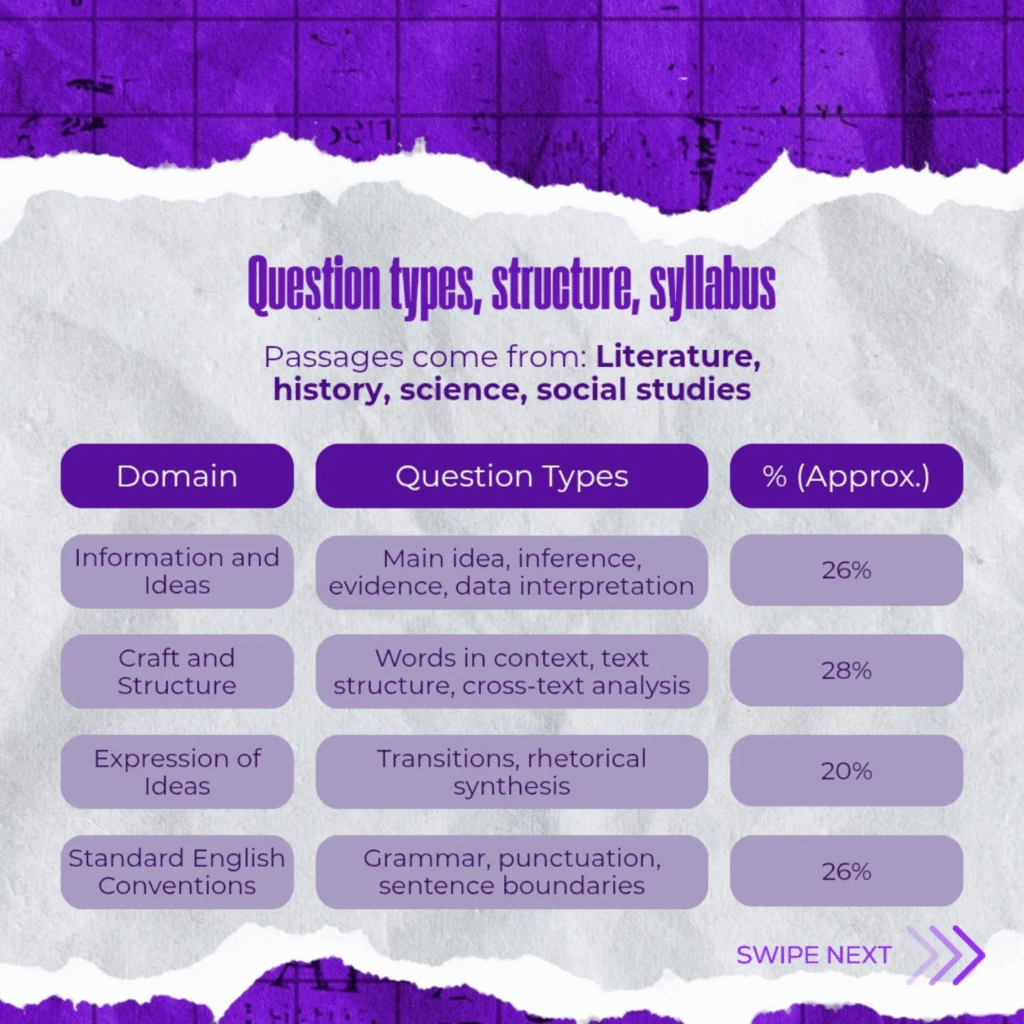The DSAT Reading and Writing section is adaptive, fast-paced, and skill-focused. To do well, you’ll need more than just strong English—you need a smart understanding of the structure, a tested strategy, and steady practice.
This guide walks you through the essential concepts and prep methods to help you master the section.

Photo: Percentage Breakdown of Question types, structure, syllabus
1. What’s Tested: Domains & Question Types
Passages on the DSAT are drawn from a wide range of topics, including literature, history, science, and social studies. The test evaluates different reading and writing skills across four core domains:
Information and Ideas
Includes questions on main ideas, inferences, evidence, and data interpretation.
Craft and Structure
Covers vocabulary in context, text structure, and cross-text analysis.
Expression of Ideas
Focuses on transitions and rhetorical effectiveness.
Standard English Conventions
Tests grammar, punctuation, and sentence structure.
Approximate percentage from each domain is shown in the graphic below.
2. How to Tackle the Section
To do well, you need more than just content knowledge—you need method. Keep these strategies in mind:
- ✅ Read actively and look for main ideas in every paragraph
- ✅ Use context clues to figure out unfamiliar words
- ✅ Know your grammar rules—they’ll be tested directly
- ✅ Pace yourself: Aim for around 1 minute per question
Note: Context clues are hints in the sentence or paragraph that help you understand new vocabulary—no dictionary needed!
3. Level Up Your Score
Improving your DSAT score takes consistency and smart reflection. Here’s how to build long-term progress:
- 🧠 Practice time management regularly
- 🧠 Analyze past mistakes to avoid repeating them
- 🧠 Target weak areas instead of random practice
- 🧠 Build grammar confidence with focused drills
- 🧠 Use context clues actively during reading
- 🧠 Read high-quality articles (science, opinion, etc.)
- 🧠 Grow your vocabulary and write down new words
Final Thoughts
The DSAT Reading and Writing section tests how well you think, read, and revise—under pressure. With the right habits, strategic practice, and awareness of what’s tested, you can confidently tackle even the toughest passages and earn a competitive score.





